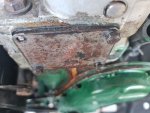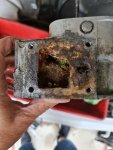I have recently taken delivery of a 1091 1961 Renault Dauphine Gordini. Its an ex SA car which has been through a couple of hands in WA before coming to me. Its basically complete but has been sitting unused for a few years. My aim is to first up getting it mechanically A1 and then getting it registered on club registration before tackling a full body restoration.
A big thank you to Ray (Geckoeng) who helped pick it up and bring it to its new home where it is now living with its younger Renault brother.




A big thank you to Ray (Geckoeng) who helped pick it up and bring it to its new home where it is now living with its younger Renault brother.












